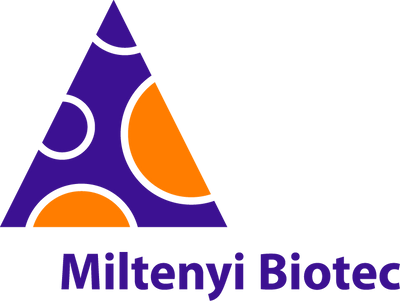ABOVE: MODIFIED FROM © ISTOCK.COM, OLHA POHREBNIAK, VLADIMIR KONONOK
Eighty million Americans have an autoimmune disease. Most such diseases are lifelong and often debilitating. They have no cure, and treating them is estimated to cost more than $100 billion annually, not counting lost productivity. Until recently, prediction and screening haven’t been a focus for these diseases because we had no way to slow or prevent them. But late last year, the US Food and Drug Administration (FDA) approved a therapy that could shift the paradigm of how we treat these diseases to earlier intervention—and ultimately, prevention.
The first revolution in autoimmune disease treatment was the transition from treating symptoms to treating the underlying cause: the immune system attacking “self.” Rheumatoid arthritis, inflammatory bowel disease, and multiple sclerosis are all routinely treated with immunotherapy. These therapies are not curative but have improved the quality of life for those with these diseases.
Now, another paradigm shift is underway. In type 1 diabetes (T1D), an autoimmune disease that most commonly begins during childhood in which the insulin-producing beta cells of the pancreas are destroyed, researchers have learned that pathogenic processes start long before any symptoms appear. Testing apparently healthy individuals allows us to identify T1D early— and now, potentially, to get better outcomes, thanks to the FDA’s November 2022 approval of teplizumab, the first therapy to prevent or delay any auto-immune disease. (One of us, Greenbaum, was chair of TrialNet, a US National Institutes of Health (NIH)–sponsored network that conducted the Teplizumab Prevention Trial). We are finally able to reap the benefits of 40 years of research and definitively state that early T1D detection is not only feasible but can support treatment decisions that could avert symptoms from ever developing.
T1D is leading this new paradigm of early detection and prevention of autoimmune diseases. To this point, T1D care has been entirely symptom-focused; when people are diagnosed, we treat their high blood glucose with insulin, and this continues for the rest of a person’s life. While researchers have developed better and better ways to deliver insulin and monitor glucose, there has been no treatment of the aberrant immunity underlying the disease. Now, we are looking at a world where T1D is not only treated with immunotherapy, but where this happens early, during the asymptomatic stages of disease.
The development of teplizumab and the results indicating that it can delay T1D diagnosis are founded on data from several long-running international studies demonstrating that is possible to identify individuals destined to develop T1D based on the presence of multiple T1D-associated autoantibodies. Strikingly, essentially all of these individuals will eventually develop T1D, but teplizumab delayed disease onset by a median of two years, and longer for some individuals.
To put those numbers in context, we routinely screen for high blood pressure. Left untreated, about 2 to 3 percent of people with high blood pressure will develop a stroke or heart attack within five years. This risk is considered a big enough problem that instead of merely telling patients they are at risk of future stroke or heart disease, we give high blood pressure a name: hypertension. We recognize the importance of screening to find people with hypertension because we know that early identification matters to those people who will experience the worst outcomes. This works because we have therapies that can prevent or reduce the risk of stroke and heart attacks. In the case of T1D, as essentially all of those at high risk will eventually develop T1D, everyone treated has the potential to benefit from therapy.
Furthermore, with the FDA approval of teplizumab, there is now precedent for therapies to prevent other autoimmune diseases as well. The milestone demonstrates to the NIH that decades of funding natural history studies in T1D were worthwhile, and to the biotech and pharmaceutical industries that there is a pathway for FDA approval for therapies that prevent these diseases.
Through work at our institution, the Benaroya Research Institute, and elsewhere, we know that T1D is not the only disease with an asymptomatic early stage. We are developing the tools to predict who is going to develop rheumatoid arthritis (RA), and early detection research for multiple sclerosis is accelerating. Critically, echoing T1D, prevention in RA is also moving ahead, including trials testing whether a therapy called abatacept can delay development of the disease in those who are flagged as being at risk primarily based on the presence of autoantibodies.
While the approval of teplizumab is transformative, how rapidly it and similar therapies will change clinical practice remains an open question. Here, the complicated dynamics of the US healthcare system play a role. Clinical practice standards will need to change such that screening for, and early detection of, autoimmune diseases becomes routine. Insurers will need to pay for screening, monitoring, and the new preventive treatments. Clinicians will need to be educated about this new paradigm, and patients will need to understand their new diagnoses and their treatment options. Sadly, paradigm shifts in clinical practice are slow, and clinicians are hard pressed for the time to discuss screening and prevention in a standard 15-minute appointment. Advancements in preventive care may end up being driven by individuals living with autoimmune diseases since personal experience with the disease can lead to advocacy for screening and early detection.
Teplizumab’s approval is just the first critically important step toward screening, early detection, and prevention of autoimmune diseases. These paradigm shifts will, with time, change the way physicians think about autoimmunity and, more importantly, change the lives of people living with, and at risk for, these diseases.








